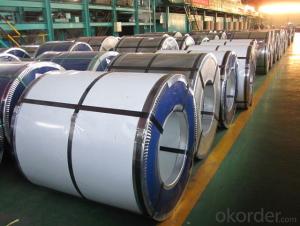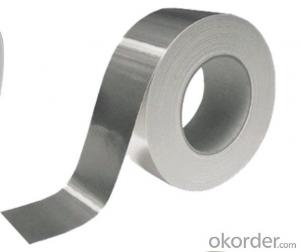Menards Aluminum Trim Coil
Menards Aluminum Trim Coil Related Searches
Led Light Bulbs For Ceiling Fixtures Led Lamps For Ceiling 42 In Ceiling Fan With Light Aluminum Coil Stock For Gutters Aluminum Foil For The Grill Hole Saw For Aluminum Plate Aluminum Tread Plate For Trailer Bow Plate For Aluminum Boat Aluminum Foil For Grow Room Aluminum Foil For Joint PainHot Searches
Stock Price For Aluminum Aluminum Coil Stock For Sale Aluminum Gutter Coil For Sale Used Aluminum Scaffolding For Sale 1/4 Aluminum Plate For Sale Aluminum Bar Stock For Sale Aluminum Round Stock For Sale Aluminum Diamond Plate For Sale Aluminum Scaffolding For Sale Craigslist 6061 Aluminum Plate For Sale Aluminum Dock Plate For Sale 7075 Aluminum Plate For Sale Aluminum Tread Plate For Sale Aluminum Checker Plate For Sale Aluminum Plate For Sale Near Me Plate Aluminum For Sale Aluminum Plate For Sale Aluminum Square Stock For Sale Aluminum Flat Stock For Sale Billet Aluminum Stock For SaleMenards Aluminum Trim Coil Supplier & Manufacturer from China
Okorder.com is a professional Menards Aluminum Trim Coil supplier & manufacturer, offers integrated one-stop services including real-time quoting and online cargo tracking. We are funded by CNBM Group, a Fortune 500 enterprise and the largest Menards Aluminum Trim Coil firm in China.Hot Products
FAQ
- Coil-stucco aluminum coils have various potential applications due to their unique properties. They are commonly used in the construction industry for roofing, siding, and facades, as their stucco surface provides enhanced durability and weather resistance. These coils are also used in the manufacturing of appliances, such as refrigerators and ovens, as well as in the automotive industry for trim and decorative purposes. Furthermore, coil-stucco aluminum coils can be utilized in the packaging industry for containers and cans due to their lightweight and corrosion-resistant nature.
- Yes, aluminum coils are highly resistant to moisture. Aluminum has a natural oxide layer that forms on its surface, which acts as a protective barrier against moisture and prevents corrosion. This makes aluminum coils an excellent choice for applications where exposure to moisture is a concern, such as in HVAC systems or outdoor equipment.
- Indeed, roofing and cladding systems can make use of aluminum coils. The lightweight characteristic and exceptional resistance to corrosion make aluminum a favored option for these purposes. In order to produce a sturdy and enduring solution, it is commonplace to employ aluminum coils in roofing and cladding systems. These coils are frequently coated with a shielding layer or finishing touch to augment both performance and aesthetics. Additionally, the ease of working with aluminum coils ensures that installation and maintenance are hassle-free. In conclusion, aluminum coils prove to be a fitting choice for roofing or cladding systems, as they provide numerous benefits and fulfill the demands of these applications.
- The specific industry and application play a role in determining the varying standard widths of aluminum coils. Generally, aluminum coils come in widths ranging from 12 inches (30.48 cm) to 60 inches (152.4 cm). These widely accepted widths are commonly utilized in construction, transportation, and manufacturing sectors. It is worth mentioning that customized widths are also readily accessible to meet specific project needs in the market.
- There are several categories in which the potential environmental impacts of aluminum coil production can be classified. Firstly, the extraction of aluminum from bauxite ore requires significant amounts of energy and can contribute to the emission of greenhouse gases. Additionally, if not managed correctly, the use of toxic chemicals in the process can contaminate nearby water sources and soil. Moreover, the manufacturing of aluminum coils involves various stages, such as smelting, rolling, and annealing, each of which has its own environmental implications. For instance, smelting releases air pollutants like sulfur dioxide, nitrogen oxides, and particulate matter, resulting in air pollution and potential respiratory issues for nearby communities. Furthermore, the rolling process consumes a substantial amount of electricity, which may be derived from fossil fuel sources, leading to additional greenhouse gas emissions. Improper management of water usage in cooling and cleaning processes can also strain local water resources. Transportation is another factor to consider. Aluminum coils are often transported over long distances, contributing to carbon emissions from the burning of fossil fuels in trucks or ships. Lastly, the disposal of waste generated during the production process, such as scrap metal or chemicals, requires careful management to prevent pollution of landfills or nearby ecosystems. To mitigate these potential environmental impacts, companies can implement various strategies. These strategies include investing in more energy-efficient technologies, promoting recycling and the principles of a circular economy to reduce the need for primary aluminum extraction, adopting cleaner production techniques, and ensuring proper waste management and pollution control measures are in place.
- Does anyone know if aluminum skateboards are good?
- I haven't seen one since the old QuickSilver-Silver Surfer(circa 1979). They look great, but they become useless when scratched. Which means....you can't really use them for anything. They're not as flexible as wood....and.......Wait until you get hit in the shin with an aluminum skateboard. Aircraft metal my(explicative deleted). My guess is they're inexpensive because they're trying to get the word out. The company owners probably no very little about skateboarding.
- Fire-resistant applications are not suitable for aluminum coils. This is because aluminum possesses a low melting point and is highly flammable, thus making it an inadequate option for fire-resistant applications. In fact, aluminum can actually aid in the propagation of fire due to its combustible nature. For fire-resistant applications, it is advisable to use materials like steel or fire-resistant alloys. These materials have a higher melting point and a greater ability to resist fire. They are specifically engineered to endure high temperatures and are less likely to contribute to the spread of fire.
- The temperature of the water drops from 93.0°C to 78.0°C. What quantity of heat energy did the piece of aluminum absorb?
- The specific heat of Aluminum is 0.215 cal/g-°C. The calories absorbed (q) would be q = m * c * (T2 -T1) = 22.0 g * 0.215 cal/g-°C * (78.0 °C - 0.3 °C) If you have a different value for the Specific heat of Aluminum, use it in the formula for your calculations. If you knew the mass of the water, you could check your calculations because the heat gained by the Al would be equal to the heat lost by the water, using q = m * c * (T2 -T1), where m is the mass of the water, c = 1.00 calorie/gram °C, T2 = 78.0 °C and T1 = 93.0 °C. The sign of q will be negative.













































